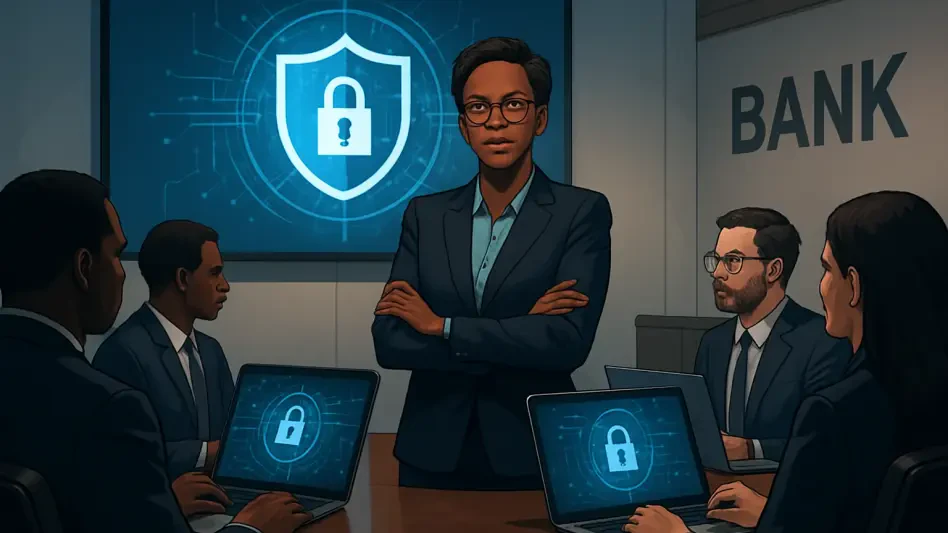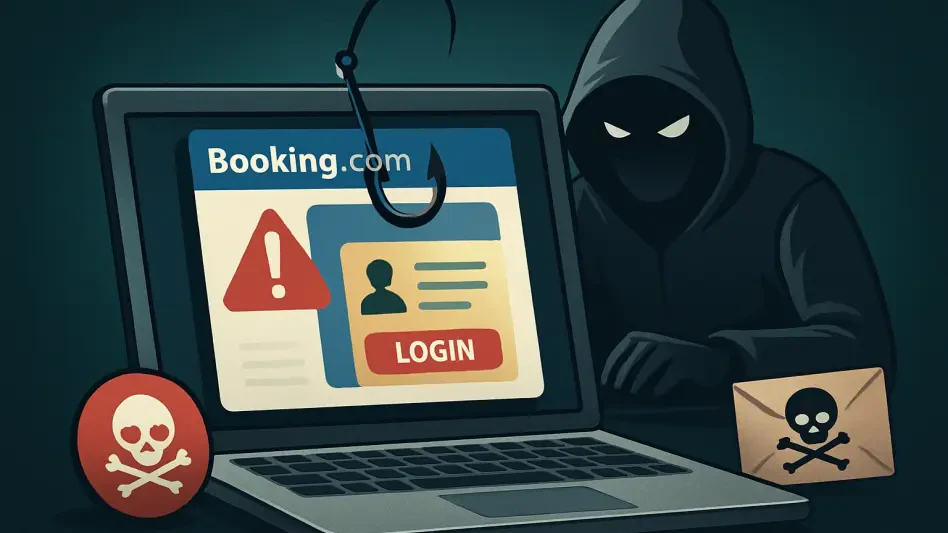In an era where cyber threats loom larger than ever, with global losses from cyberattacks exceeding billions annually, the role of cybersecurity leaders has become pivotal in safeguarding organizations. Imagine a financial institution like a major bank facing relentless digital assaults every day, where a single breach could erode customer trust and destabilize operations. This scenario underscores the critical need for visionary leadership in cybersecurity, particularly in industries where data security is paramount. The purpose of this FAQ article is to delve into how cybersecurity leadership is evolving, spotlighting innovative strategies and insights from a prominent figure at a leading bank in the UAE. Readers can expect to explore key questions about the transformation of the Chief Information Security Officer (CISO) role, the integration of security into business strategy, and emerging practices that are reshaping the field. This content aims to provide clarity on complex concepts and offer actionable takeaways for understanding modern cybersecurity challenges.
The scope of this discussion extends beyond technical jargon, focusing instead on strategic shifts and their broader implications for businesses. By addressing common queries, the article seeks to bridge the gap between technical security measures and their role as business enablers. Whether you’re a professional in the field or a curious observer, readers will gain a comprehensive view of how cybersecurity is becoming a cornerstone of organizational success.
Key Questions or Topics
How Has the Role of the CISO Evolved in Modern Business?
The role of the CISO has undergone a profound transformation in recent years, moving far beyond its traditional roots in IT management. Once primarily tasked with overseeing firewalls and antivirus software, CISOs today are expected to act as strategic partners in enterprise risk management. This shift is driven by the recognition that cybersecurity impacts not just technology but also customer trust, regulatory compliance, and overall business growth, especially in sectors like banking.
In this new landscape, CISOs must balance technical expertise with a deep understanding of business objectives. They are no longer seen as gatekeepers who block initiatives over security concerns but as facilitators who align protective measures with organizational goals. For instance, at a leading UAE bank, a CISO’s input has proven instrumental in ensuring that business projects meet stringent security standards, thereby gaining regulatory approval and driving success.
This evolution highlights a broader trend where cybersecurity leaders sit at the boardroom table, influencing high-level decisions. Their ability to communicate risks and solutions in business terms has become as crucial as their technical acumen, marking a significant departure from past perceptions of the role as merely operational.
Why Is Integrating Cybersecurity into Business Processes Crucial?
Integrating cybersecurity into business processes addresses a fundamental challenge: security cannot be an afterthought if organizations aim to thrive in a digital economy. Historically, security teams operated in silos, often clashing with business units over priorities. However, as cyber risks have escalated, the need for seamless collaboration between security and other departments has become undeniable, especially in industries handling sensitive data.
Effective integration means embedding security considerations into the early stages of project planning and execution. This approach ensures that developers, managers, and other stakeholders view security as a supportive framework rather than a hindrance. A notable example is a financial institution in the UAE where a business initiative succeeded due to proactive security involvement, demonstrating how such alignment can validate and enhance strategic efforts.
The impact of this integration extends to fostering a culture of shared responsibility for risk management across the organization. By breaking down barriers between technical and non-technical teams, companies can innovate confidently, knowing that security measures are woven into their operational fabric, thus protecting both assets and reputation.
What Is the Role of a Business Information Security Officer (BISO)?
The introduction of the Business Information Security Officer (BISO) represents an innovative response to the growing complexity of cybersecurity governance. Positioned as a bridge between cybersecurity teams and business units, the BISO role is designed to ensure that security policies are understood and implemented effectively across different departments. This need arises from the increasing demand for accountability in managing cyber risks at every organizational level.
BISOs act as ambassadors for security, translating technical requirements into actionable business practices. At a prominent bank in the UAE, the rollout of this role has been approached in phases, initially focusing on security expertise before gradually incorporating broader business leadership skills. This staged development aims to create advocates who can independently handle risks within their units, supported by tools and frameworks from the central security team.
Such a role not only enhances communication but also empowers business lines to take ownership of their security posture. By fostering localized accountability, BISOs help ensure that cybersecurity is not just a top-down mandate but a pervasive element of daily operations, ultimately strengthening the organization’s resilience against threats.
How Does Zero-Based Budgeting Enhance Cybersecurity Funding?
Budgeting for cybersecurity has often been a contentious issue, with resources sometimes allocated based on historical spending rather than current needs. Zero-Based Budgeting offers a fresh perspective by requiring a complete reassessment of financial needs each cycle, focusing on present threats, regulatory demands, and strategic priorities. This method addresses the challenge of adapting to a rapidly changing risk landscape where outdated budgets may leave critical gaps.
Under this approach, every expenditure must be justified from scratch, promoting transparency and ensuring that funds are directed toward the most pressing issues. At a leading financial institution in the UAE, adopting Zero-Based Budgeting has garnered positive feedback from board members and business partners, reflecting a growing appreciation for flexible and responsive financial planning in cybersecurity.
This strategy enables organizations to prioritize investments in emerging threats or new compliance requirements over maintaining legacy systems. The result is a more agile allocation of resources, aligning cybersecurity funding with the dynamic nature of digital risks and reinforcing the importance of adaptability in resource management.
What Are the Current Successes and Challenges in Cybersecurity?
Over the past few years, cybersecurity has seen remarkable advancements, particularly in technical defenses within the banking sector. Secure digital applications and transaction portals have become standard, significantly reducing vulnerabilities in customer-facing systems. These successes stem from concerted efforts to bolster infrastructure against sophisticated attacks, ensuring safer interactions in an increasingly online world.
Despite these achievements, new challenges have emerged, particularly with threats targeting human behavior, such as phishing and social engineering. These attacks exploit user vulnerabilities rather than system weaknesses, posing a persistent risk even to well-protected organizations. Addressing this requires ongoing education and refined processes to guide safe interactions with technology.
The duality of progress and obstacle underscores a critical insight: while technology can be fortified, the human element remains a frontier for improvement. Continuous focus on awareness campaigns and procedural enhancements is essential to mitigate risks that bypass even the most robust technical safeguards, highlighting the multifaceted nature of modern cybersecurity.
Summary or Recap
This article distills the transformative journey of cybersecurity leadership, emphasizing how the CISO role has shifted from a technical focus to a strategic imperative within business frameworks. Key insights include the necessity of embedding security into operational processes, the innovative introduction of BISOs to foster accountability, and the adoption of Zero-Based Budgeting to ensure responsive resource allocation. Additionally, while technical successes in securing digital platforms are evident, challenges like human-centric threats persist, demanding sustained attention to education and process improvement.
These takeaways illustrate the broader implications for organizations aiming to navigate a complex threat landscape. Cybersecurity is no longer an isolated function but a vital component of resilience and growth, requiring collaboration across all levels. For those seeking deeper exploration, resources on industry trends and best practices in risk management can provide further context and guidance on implementing these strategies effectively.
Conclusion or Final Thoughts
Reflecting on the insights shared, it becomes evident that cybersecurity leadership has reached a turning point, demanding a blend of technical prowess and business acumen that was previously unimagined. The experiences at a leading UAE bank highlight actionable pathways, such as nurturing roles like the BISO to bridge gaps between security and business units. Moving forward, organizations should consider investing in tailored training programs that elevate security awareness among employees, addressing the human vulnerabilities that technology alone cannot resolve.
As a next step, businesses are encouraged to reassess their budgeting models, perhaps adopting flexible strategies that have proven effective in dynamic environments. This could ensure resources are always aligned with the most urgent threats. Ultimately, readers should ponder how these evolving principles apply to their own contexts, identifying opportunities to integrate security as a driver of innovation rather than a constraint, thereby building a more secure and forward-thinking operational foundation.








